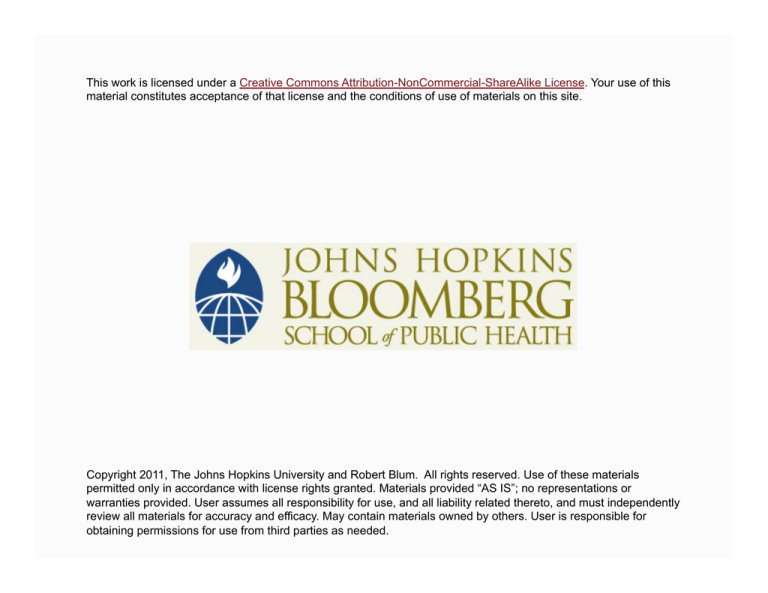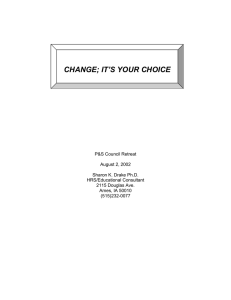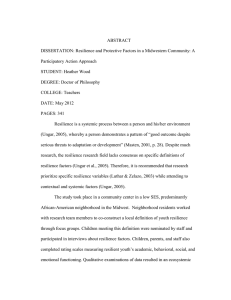
This work is licensed under a Creative Commons Attribution-NonCommercial-ShareAlike License. Your use of this
material constitutes acceptance of that license and the conditions of use of materials on this site.
Copyright 2011, The Johns Hopkins University and Robert Blum. All rights reserved. Use of these materials
permitted only in accordance with license rights granted. Materials provided “AS IS”; no representations or
warranties provided. User assumes all responsibility for use, and all liability related thereto, and must independently
review all materials for accuracy and efficacy. May contain materials owned by others. User is responsible for
obtaining permissions for use from third parties as needed.
Resilience in Adolescence
Robert Wm. Blum, MD, MPH, PhD
Johns Hopkins University
Section A
First Generation Resilience Research
First Generation Resilience Research
Emmy Werner: Children of Kauai Study
Norm Garmezy: Resilience
Michael Rutter: Isle of Wight Study
4
First Generation Components of Risk and
Resilience
Factors
Dispositional
(personal
characteristics)
Risk
• Prenatal/perinatal stress
• Poor expressive language
• Physical impairment
• Aggressive temperament
• External locus of control
• Lower intelligence
• Learning problems
• More traditional sex role
• Changes of puberty
Resilience
• Spirituality
• Positive social skills/
orientation to other person
• Internal locus of control
• Higher intelligence (e.g.,
average)
• Positive self-concept
• More androgynous
• Higher self esteem
5
First Generation Components of Risk and
Resilience
Factors
Dispositional
(personal
characteristics)
Risk
• Prenatal/perinatal stress
• Poor expressive language
• Physical impairment
• Aggressive temperament
• External locus of control
• Lower intelligence
• Learning problems
• More traditional sex role
• Changes of puberty
Resilience
• Spirituality
• Positive social skills/
orientation to other person
• Internal locus of control
• Higher intelligence (e.g.,
average)
• Positive self-concept
• More androgynous
• Higher self esteem
6
First Generation Components of Risk and
Resilience
Factors
Family
Risk
Resilience
• Low maternal education
• Family discord
• High maternal stress
• Poverty
• Family mental illness
• Overcrowding
• Lack of a positive motherchild relationship
• Family chaos
• Large family size
• Connectedness with at least
one parent
• Family cohesion
• Family structure
• Sibling closeness
7
First Generation Components of Risk and
Resilience
Factors
External
Risk
Resilience
• Few, if any, external
supports (formal or
informal)
• More than four stressful life
events
• Caring adult other than
parents
• Involvement with school
and/or community
• Friendship network
• Fewer negative life events
• More caregivers during
childhood
8
Conclusions from First Generation of Research
Resilience and happiness are not synonymous
Individual developmental and environmental factors interact,
resulting in adolescent behaviors
Young people do not consistently show resilience across all
domains of their life
Failure to address emotional needs can derail resilience
9









